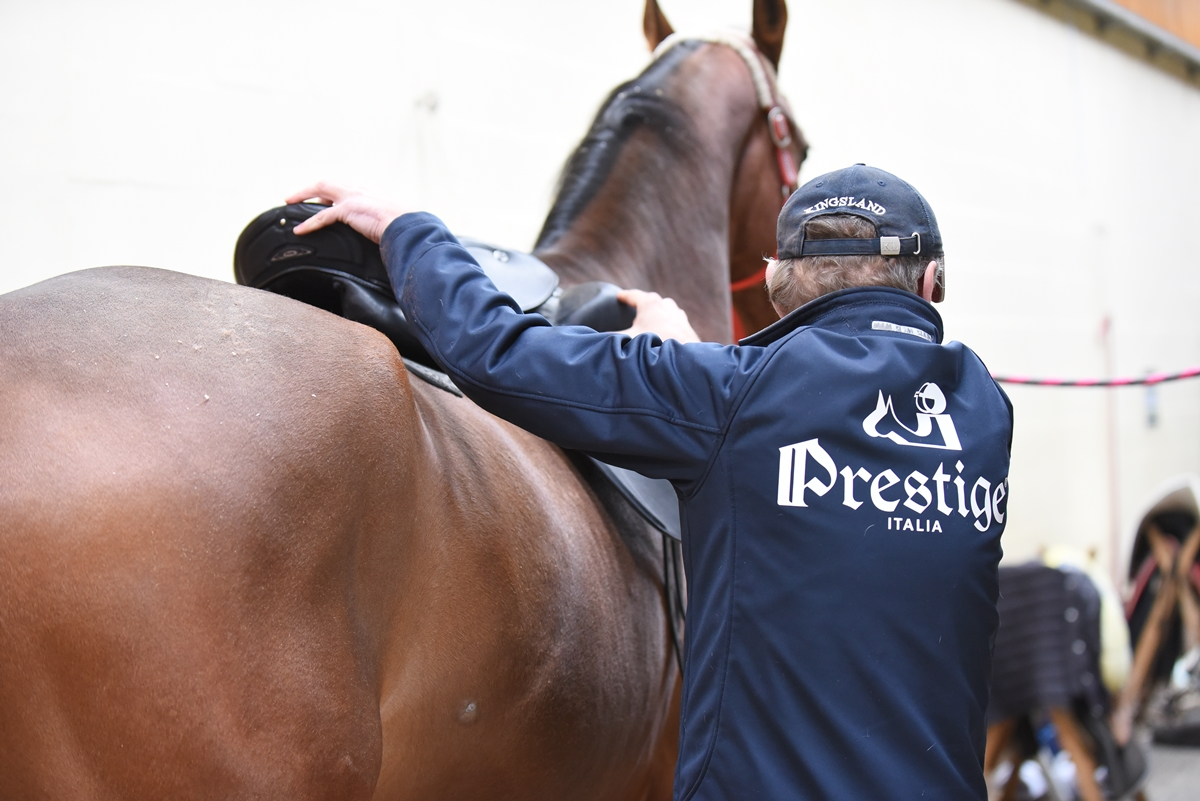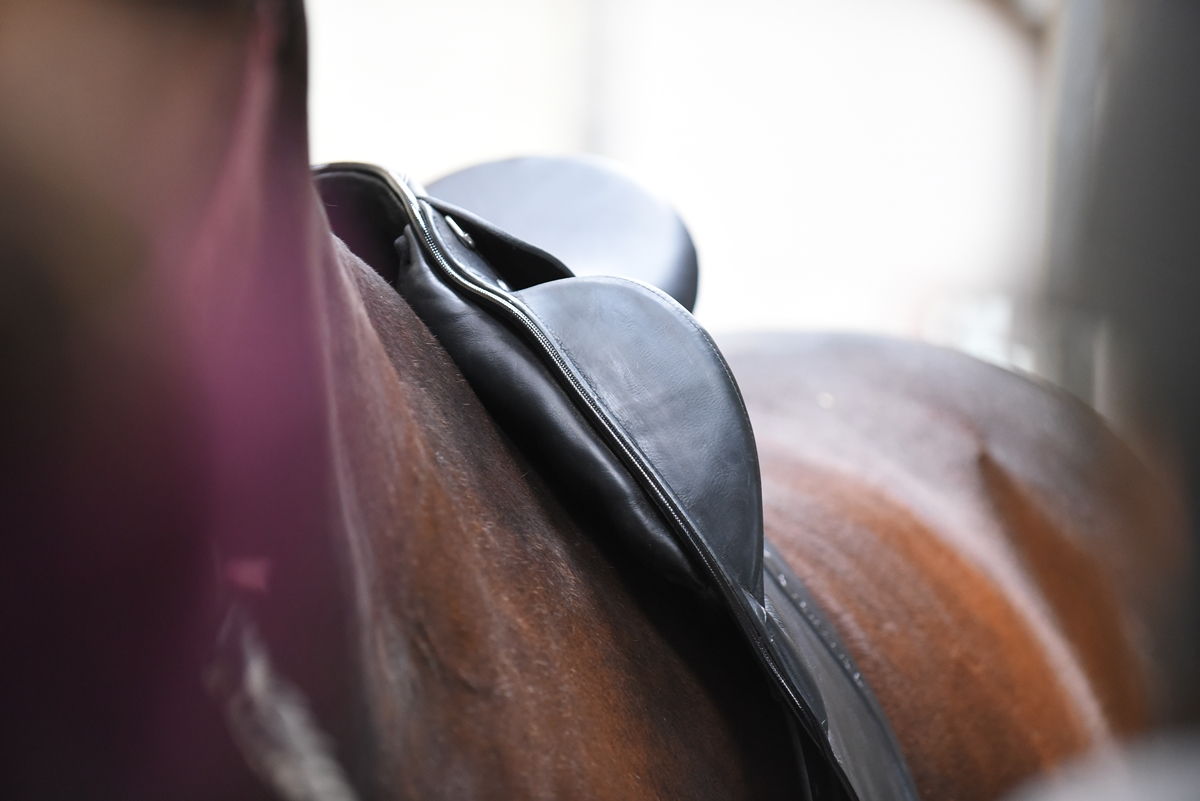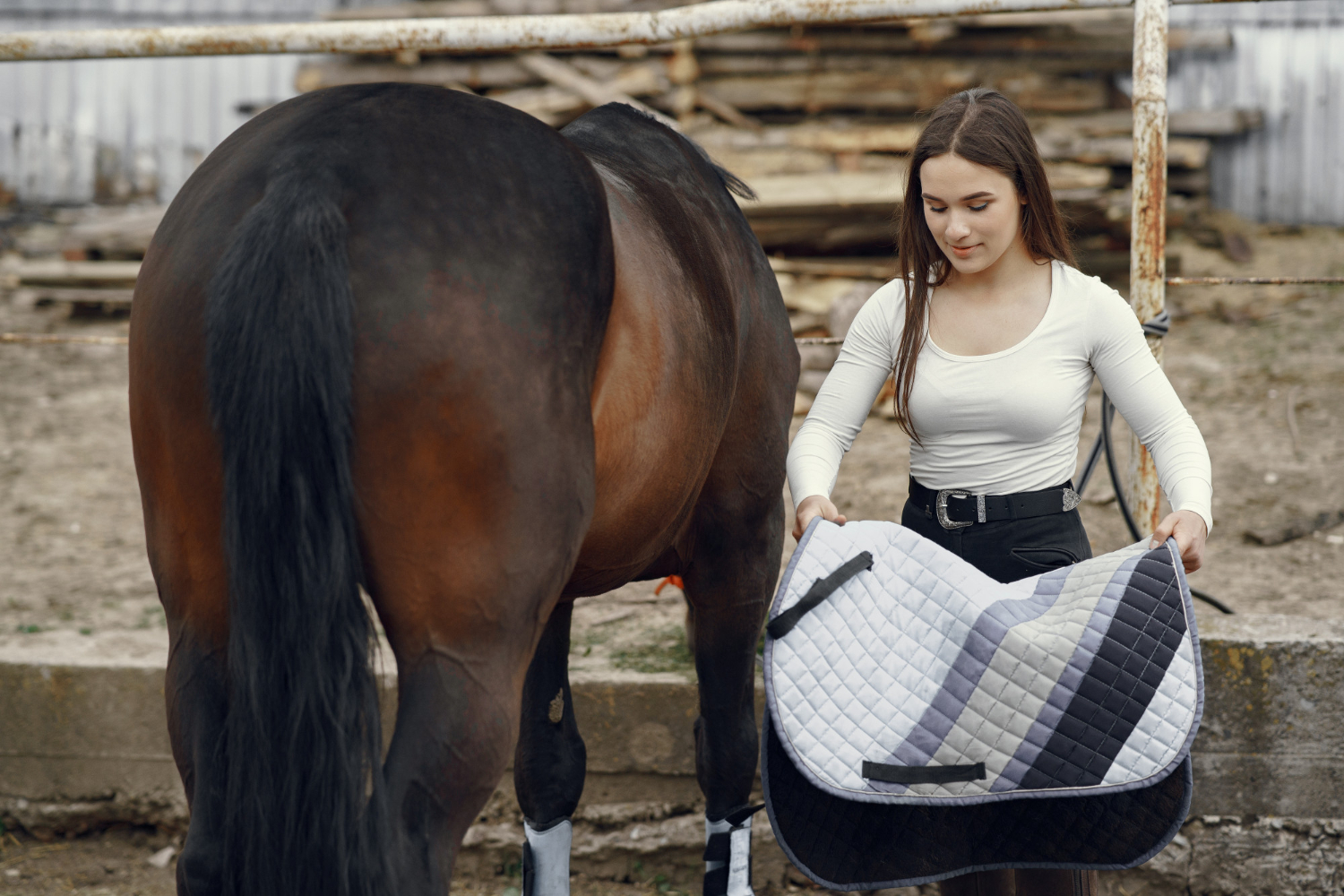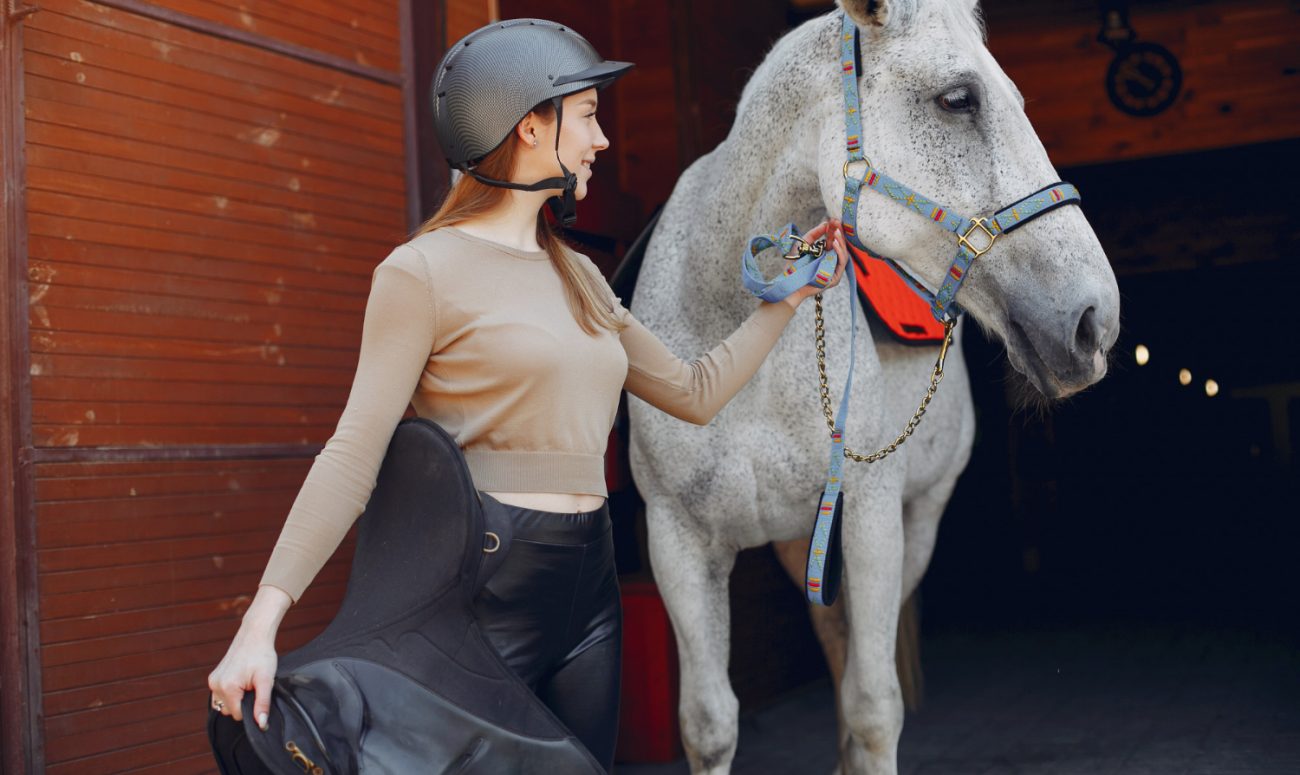If you are facing the purchase of a new jumping or dressage saddle or are concerned that your saddle may not be fitting correctly, it’s essential to learn how to achieve the ideal fit. A saddle consists of elements whose characteristics account for the anatomical shape of both the horse and the rider. This makes horseback riding a pleasant and exciting experience for both you and your horse.
Saddle fitting guide
Saddle fitting can be one of the most challenging aspects of horse ownership for many riders. Making sure your saddle fits perfectly on your horse’s back can be an arduous task. Fortunately, many professional saddle fitters provide lessons to educate riders on the factors involved in selecting an appropriate saddle. While it may be expensive, it’s well worth spending the money to learn how to find the ideal saddle for your horse and individual riding objectives.
Follow our saddle fitting guide to learn how to fit a saddle. Begin the saddle fitting by placing the saddle on your horse, without a saddle pad. It is crucial not to use a saddle pad to see how the saddle sits directly on the horse’s back. Check if the front of the saddle is not too far forward at the horse’s elbow. Make sure the saddle is positioned correctly, i.e. that the gullet clears all along the length of your horse’s spine, and the saddle allows some room for the horse’s spinal processes and ensures even contact.

Saddle trees
The tree of a saddle is its foundation and a crucial factor when saddle fitting. Not only does it support your horse’s spine, but is responsible for distributing the rider’s weight evenly across the horse’s back. Therefore, finding the right tree configuration for your horse is crucial to ensure maximum comfort and performance. Start by taking a close look at your horse’s back to determine its shape of withers. Some horses have narrower withers than others, so you should select the tree width accordingly.
The foundations of a saddle’s tree are the gullet plates and tree points. Ideally, the gullet plate should sit behind the horse’s shoulder blade with enough room between it and the back of the saddle. The tree width must be wide enough to allow for comfortable shoulder rotation as the horse moves. Another important elements are the tree angles. Tree angles should match those of your horse’s shoulder blades.
It is essential that the tree points make contact with the area of the trapezius muscle directly behind the horse’s shoulder blade, as this area fills out most when in motion. To check that, slide your flat hand under the saddle and check if there are any pressure points in the trapezius area. If you feel too much pressure, the saddle will not fit your horse properly.
When selecting a saddle tree, it’s essential to consider the tree width. The tree width should match your horse’s back and provide sufficient clearance for the spine. Typically, a saddle with a too-narrow tree can cause pressure points – if the tree is too narrow, its front edge points will sit up on the horse’s withers and put too much pressure on its back. A too-wide tree can shift around and lead to back pain and saddle slipping. Other signs of insufficient wither clearance that are putting pressure on the horse’s back are patches of white hairs on the withers.
Conversely, if it’s too wide, then the saddle may shift around and not maintain the correct position. Fitting a saddle correctly is the most critical component of saddle fit; an appropriately fitted tree allows the rider to move comfortably on their horse while providing stability within their relationship with their mount.
Finally, check the wither clearance. The front edge of the tree points should be two to three fingers between the edge of the horse’s shoulders. This area, commonly referred to as “handhold,” can be checked by inserting your finger through it and feeling for clearance between your horse’s back and saddle.
It’s recommended that you have a professional saddle fitter assess your horse’s conformation and saddle fit to determine the right saddle tree configuration for your animal. With the right saddle tree, you and your horse can enjoy a comfortable riding experience.

Saddle seat
The saddle seat is a vital aspect of the saddle that ensures both rider and horse’s comfort and safety. It’s essential to choose the right seat size to prevent discomfort or pain caused by an ill-fitting saddle.
Saddle makers take various measurements to evaluate a saddle when constructing it, including not only the horse’s conformation, but also the riding discipline. Unlike jumping ones, dressage saddles will have a deep seat.
A saddle that fits correctly will provide sufficient leg support and cushioning for the rider, ensuring they can maintain proper posture and balance. If the seat size is too small or too large, it can cause discomfort and affect the rider’s balance, leading to potential safety issues.
Saddle flap
The flaps are a part of the saddle where the rider’s leg sits against the horse’s sides. To ensure the right saddle fit, verify that the flap’s points are parallel to the side of the withers. To do this, stand next to the horse’s left shoulder and lift up the saddle flap. With your eye, try to locate where the point pocket is located – usually a small leather compartment in which wooden processes of the pommel fit.
In a dressage saddle, the flaps are longer and less round. Shorter flaps of jumping saddles allow for proper angle of bent knees. They affect the rider’s comfort.
Saddle panels
Panels can be tailored to suit most horses as well as different riding styles. Straight panels for horses with wider backs, banana-shaped for those that have a dip in the rear, or curved shapes to follow the contour of a horse’s back from withers to croup.
Saddle length is another important aspect when saddle fitting, and a too-long saddle can have many detrimental effects on the horse. In a good saddle, the panels lie flat on the horse’s back. They must not sit further than the horse’s last rib.
Stirrup Bar
The stirrup bar is an essential feature of a saddle, as it allows riders to adjust their leg position. Not only that, but its position also influences how one sits in the saddle and how their horse responds to that position. Additionally, it provides stability to a rider’s lower leg and hip as they move forward in the seat.
Therefore, it is essential to find a stirrup bar that supports your leg in an even manner and allows the saddle to provide proper back support for your horse. Make sure the stirrup bar doesn’t pinch or dig into any part of your horse’s body.

Summary: saddle fit – horse riding
Saddles are designed to promote balance and distribute the rider’s weight evenly on a horse’s back. This is accomplished through the shape and size of the tree, its panels surrounding it, as well as the style of seat used.
It is crucial that the saddle fits the horse and sits properly on its back. Tail swishing is one of many behaviours that can indicate a horse’s discomfort and the need for a saddle check. Poor saddle balance is yet another sign that you might need a new saddle. Saddle fitting is best done by a qualified saddle fitter. A saddle fitter must take into account the rider’s height and weight, his or her riding skills and equestrian discipline, as well as the anatomical shape of the horse’s back.
Overall, a well-fitting saddle with an appropriately sized seat can enhance the horse’s performance and behavior while keeping both horse and rider comfortable and safe. With an optimal fit, you will enjoy riding more fully, reaching all of your riding potential, while the horse will perform at its peak performance without any pain or discomfort.
Read more about how to fit a saddle for a rider
